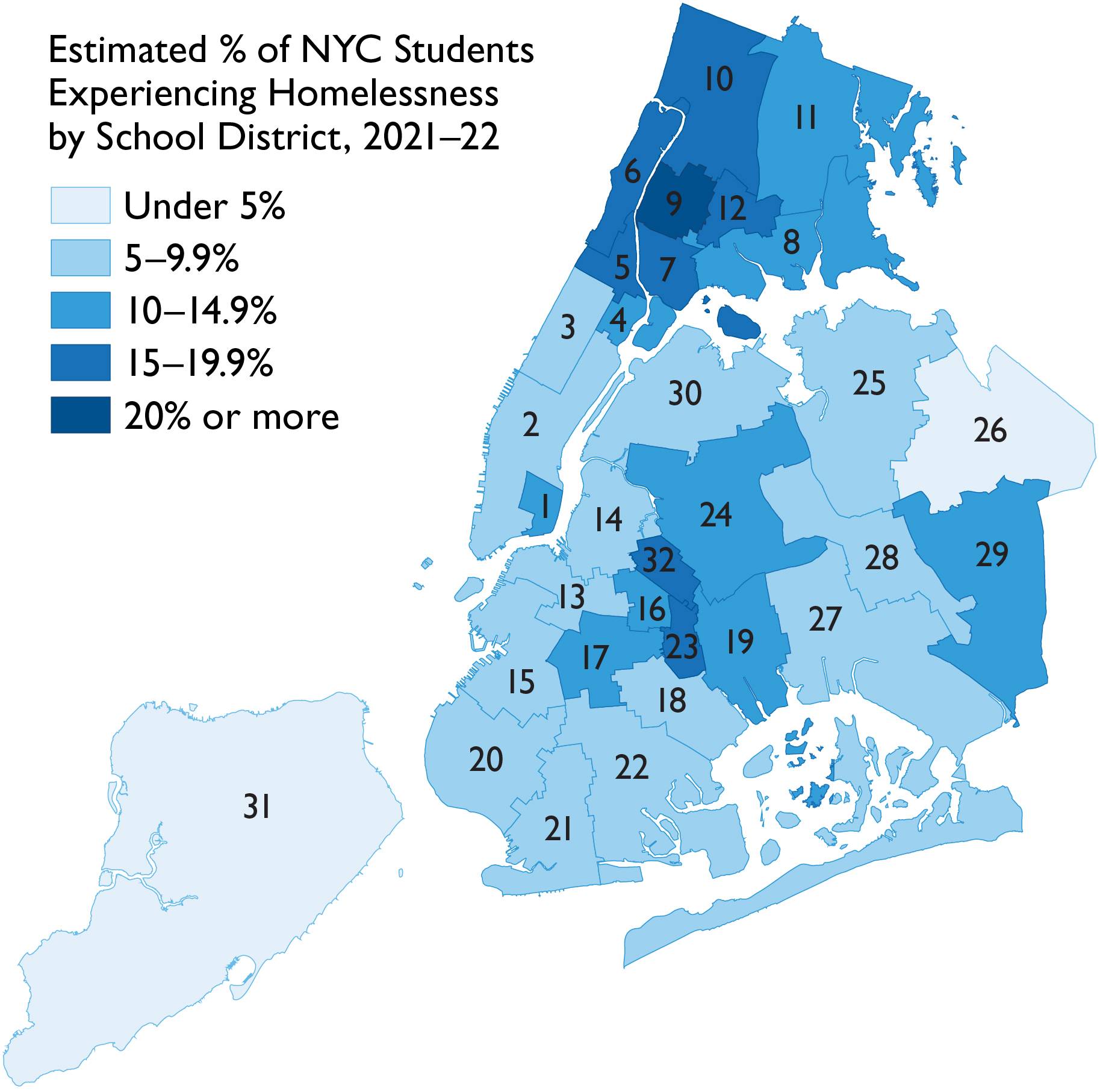High rates of chronic absenteeism and poor academic outcomes for students who are homeless—and especially for those living in shelter—are as disturbingly consistent as the prevalence of student homelessness itself. In 2020-21, students in shelter dropped out of high school at more than three times the rate of their permanently housed peers; only 60% graduated in four years; and 64% were chronically absent, meaning they missed at least one out of every ten school days.
The City has committed to hiring 100 shelter-based DOE Community Coordinators this year to help families navigate the school system, resolve barriers to regular attendance, and connect students in shelter with needed supports. However, a month and a half into the school year, at a time when the shelter system is at a breaking point, none of these staff have been hired, and there is a leadership vacuum at the DOE Office of Students in Temporary Housing following the departure of its executive director and other key staff. The City should fill these vacancies right away. And since the DOE can’t do this work alone, the City should also bring together City agencies to tackle the multitude of educational issues facing the growing number of students who are homeless, including transportation, chronic absenteeism, and delays in enrollment and service provision.
“The DOE needs to ensure the new migrant students entering the shelter system are enrolled in schools that can meet their needs, while not losing sight of the longstanding issues facing the tens of thousands of students who were already homeless,” said Jennifer Pringle, Director of AFC’s Learners in Temporary Housing Project. “The new Community Coordinators will be critical for helping students in shelter access a quality education and break the cycle of homelessness. Hiring and training all 100 of these staffers so they can support families on day one, along with filling the open leadership roles within the Students in Temporary Housing team, must be an urgent priority for this administration.”



